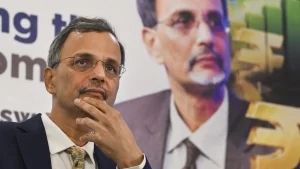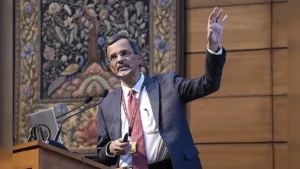New Delhi – Chief Economic Adviser V Anantha Nageswaran has expressed significant optimism regarding the potential removal of the US penal tariff India measures after November 30, 2025. Speaking at a Merchants’ Chamber of Commerce & Industry event in Kolkata, the CEA indicated that recent diplomatic developments suggest a positive resolution to the ongoing trade dispute between the two nations.
The US penal tariff India situation has created substantial economic challenges for bilateral trade relations, with the additional 25% punitive levy adding to existing reciprocal tariffs. Nageswaran’s statement represents the most optimistic official projection regarding the timeline for resolving these trade restrictions that have impacted billions of dollars in commerce.
Background of US Penal Tariff India Implementation

The US penal tariff India measures were implemented when President Trump invoked the International Emergency Economic Powers Act (IEEPA), a 1977 legislation designed for sanctions and financial controls during foreign emergencies. Initially, India faced 25% reciprocal tariffs, but the US penal tariff India rate was subsequently increased to a cumulative 50% on most Indian imports.
According to the CEA’s analysis, the US penal tariff India implementation was influenced by geopolitical circumstances that were not initially anticipated. The additional 25% punitive tariff came on top of the original reciprocal tariff, creating a substantial barrier to India’s export competitiveness in the American market.
CEA’s Intuitive Assessment on Timeline

Nageswaran acknowledged that while he has “no particular reason” to make definitive predictions, his intuition based on recent developments suggests that the US penal tariff India measures will not continue beyond November 30. This assessment reflects ongoing diplomatic engagement and the evolving nature of India-US economic discussions.
The CEA emphasized that “recent developments in the last couple of weeks” have contributed to his optimistic outlook regarding the US penal tariff India resolution. He expressed belief that there will be a comprehensive resolution within the next couple of months, covering both penal and reciprocal tariffs affecting bilateral trade.
Scope and Impact of Current Tariff Structure
The current US penal tariff India framework applies broadly to Indian products entering American markets, with the 50% tariffs now in effect on most goods either entered for consumption or withdrawn from warehouses. However, the US Customs notification has identified several important exclusions from the US penal tariff India coverage.
Key exemptions from the US penal tariff India measures include iron and steel products along with their derivatives, aluminum products and derivatives, passenger vehicles such as sedans, SUVs, crossovers, minivans, cargo vans, and light trucks, plus their spare parts. Semi-finished copper products and certain intensive copper derivatives are also excluded from the higher tariff rates.
Also Read: Jimmy Kimmel Show Cancelled: Trump’s Explosive Reaction Shakes Late-Night TV
Economic Impact and Export Performance


Despite the US penal tariff India challenges, India’s export performance continues to show resilience, with annual exports currently at $850 billion and projected to reach $1 trillion, representing 25% of GDP. This trajectory indicates a healthy, open economy that can weather trade disputes while maintaining growth momentum.
According to Global Trade Research Initiative analysis, approximately 30.2% of India’s exports to the United States, valued at $27.6 billion, continue to enter the American market duty-free despite the US penal tariff India implementation. This substantial exemption demonstrates that while the tariffs create challenges, significant trade channels remain unaffected.
Ongoing Diplomatic Engagement


The CEA’s optimism about US penal tariff India removal reflects continued high-level diplomatic engagement between both countries. Recent trade discussions and diplomatic initiatives have apparently created momentum toward resolving the punitive measures that have strained economic relations.
The US penal tariff India situation has been a significant topic in bilateral economic dialogues, with both nations recognizing the importance of maintaining robust trade relationships. The November 30 timeline mentioned by Nageswaran suggests that specific negotiations or deadlines may be influencing the resolution process.
Strategic Implications for Bilateral Trade
The potential removal of US penal tariff India measures would represent a significant victory for economic diplomacy and could pave the way for expanded bilateral trade cooperation. Both nations have substantial economic interests in resolving trade disputes and maintaining strong commercial relationships.
The resolution of the US penal tariff India issue could also create positive momentum for broader trade negotiations, potentially leading to more comprehensive agreements that benefit both American consumers and Indian exporters. This development would demonstrate the effectiveness of sustained diplomatic engagement in resolving complex trade disputes.
Future Outlook and Economic Projections
If the US penal tariff India removal occurs as projected, it could significantly boost bilateral trade volumes and contribute to India’s goal of reaching $1 trillion in annual exports. The resolution would eliminate a major barrier to trade competitiveness and restore normal commercial relations between these important economic partners.

